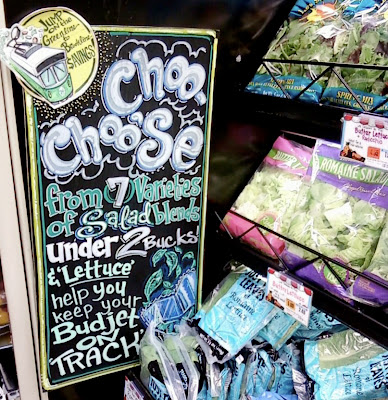First off: Happy Halloweekend all! I love all things Halloween: creative costumes, festive spirits, candy corn...
Since this is the only time of year that these pointed yellow-orange-and-white sugary treats are in stock, I definitely take the opportunity to indulge a bit. This leads us into today’s Frugal Friday topic: the financial benefits of buying seasonal foods.
Feeling a bit guilty over the latex Sarah Palin costume you just purchased (I hope not, Palin costumes are so last Halloween)? A good way to make nice with your wallet is to ease up on money spent in the grocery store by taking advantage of seasonal specials!
When foods, especially fresh fruits and veggies, are in greater supply, the costs tend to be lower. Seasonal food requires less effort to produce than out-of-season products because they don’t need as much labor and time.
In addition to lower costs, buying seasonal foods yields many benefits:
- Seasonal foods can imply locality. Since these foods do not need to be flown in from across the country/world, the unhealthy environmental impact of transportation is lessened.
- Seasonal foods often taste better since they were allowed to grow and ripen properly without being shipped over great distances.
- Seasonal foods can be healthier, since out-of-season food is often forced to grow in artificial environments with the aid of fertilizer.
- Experience new, interesting tastes and textures by trying what’s in season. Maybe you’ll realize an unknown love for roasted cauliflower!
Some autumn fruits/veggies include apples, beetroot, cabbage, carrots, cauliflower, cranberries, grapes, lettuce, mushrooms, parsnips, pears, potatoes, pumpkin squash, tomatoes, and watercress.
Don’t feel like you have to suffer without your summer strawberries! Fall’s seasonal goodies yield so many delicious recipes. Doesn’t a hot loaf of pumpkin bread sound perfect? What about a fresh apple crisp? Sweet potato casserole? Roasted Squash?
One seasonal recipe I would love to try soon is Emily’s Roasted Squash and Black Bean Chili in Pumpkin Bowls dish. Until I find the time for that recipe, I’m pretty content snacking on these Fall finds:
What food are you happy to see in season right now?
Today’s Recommended Read: 5 Terrific Fall Foods (TLC Cooking)










































